Share
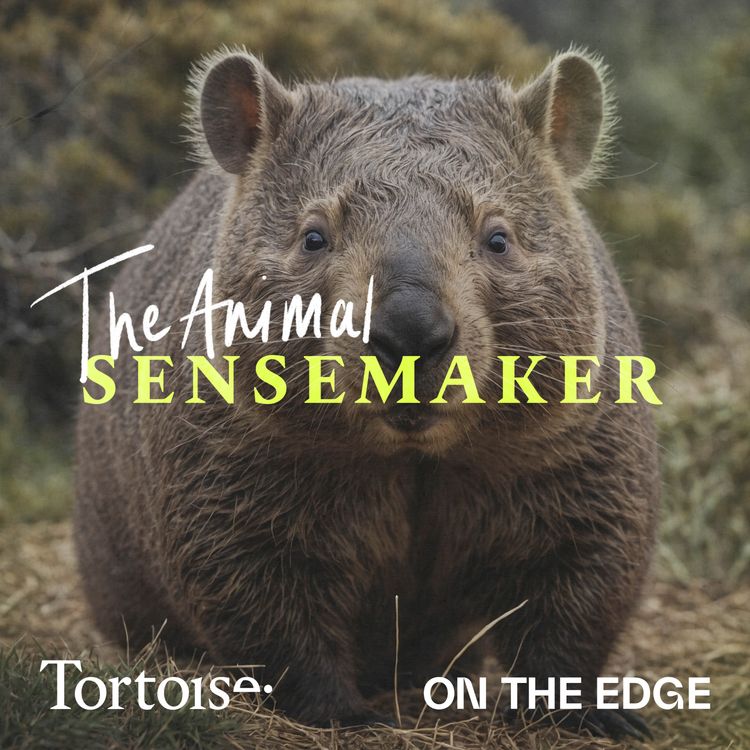
The Animal Sensemaker
Wombat: cubed poop and a secret weapon
Wombats may look like chunky teddy bears, but when threatened, they unleash a surprising defense to fend off predators.
The Animal Sensemaker - one animal, every week to make sense of the world. Brought to you by Tortoise and On the Edge.
You can find out more about wombats here.
Jack Ashby's book "Platypus Matters: The Extraordinary Story of Australian Mammals" is out now.
You can find out more about Tortoise:
Download the Tortoise app - for a listening experience curated by our journalists
Subscribe to Tortoise+ on Apple Podcasts for early access and ad-free content
Become a member and get access to all of Tortoise's premium audio offerings and more
If you want to get in touch with us directly about a story, or tell us more about the stories you want to hear about contact hello@tortoisemedia.com
More episodes
View all episodes

36. Purple frogs: an annual ritual
08:59||Season 1, Ep. 36Once a year purple frogs come above ground to mate but in doing so, they face a whole host of challenges.The Animal Sensemaker - one animal, every week to make sense of the world. Brought to you by Tortoise and On the Edge. To find out more about The Observer:Subscribe to TheObserver+ on Apple Podcasts for early access and ad-free contentHead to our website observer.co.uk Download the Tortoise app – for a listening experience curated by our journalistsIf you want to get in touch with us directly about a story, or tell us more about the stories you want to hear about contact hello@tortoisemedia.com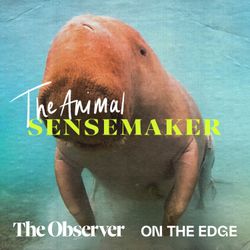
35. Dugong: seagrass and karaoke bars
09:46||Season 1, Ep. 35Given how much seagrass Dugongs consume everyday, they're often referred to as sea cows. But when they're not busy eating, how do they communicate with each other?The Animal Sensemaker - one animal, every week to make sense of the world. Brought to you by Tortoise and On the EdgeYou can find out more about the dugong here: https://www.ontheedge.org/edge-zine/species-spotlight/dugong?rq=dugong?utm_campaign=TheAnimalSensemaker?utm_medium=Partnerships?utm_source=TortoiseTo find out more about The Observer:Subscribe to TheObserver+ on Apple Podcasts for early access and ad-free contentHead to our website observer.co.uk Download the Tortoise app – for a listening experience curated by our journalistsIf you want to get in touch with us directly about a story, or tell us more about the stories you want to hear about contact hello@tortoisemedia.com
34. Great Green Macaw: picky eaters and favourite trees
09:48||Season 1, Ep. 34Found across Central and South America, the Great Green Macaw is the world’s second largest. Despite having a lush rainforest to choose from though, the macaw quite particular when it comes to food and nesting sites. To find out more about the Great Green Macaw click here: https://www.ontheedge.org/edge-zine/species-spotlight/great-green-macaw?rq=great%20green%20macaw?utm_campaign=TheAnimalSensemaker?utm_medium=Partnerships?utm_source=Tortoise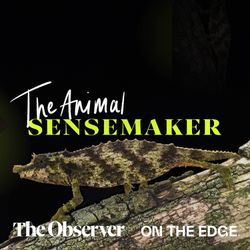
33. Nguru pygmy chameleon: forest floors and fast tongues
07:59||Season 1, Ep. 33No bigger than a golf tee, the Nguru pygmy chameleon tends to hide among leaf litter on forest floors. But why are they important to local farmers?The Animal Sensemaker - one animal, every week to make sense of the world. Brought to you by Tortoise and On the EdgeYou can find out more about the Darwin frog here: https://www.ontheedge.org/edge-zine/species-spotlight/nguru-spiny-pygmy-chameleon?utm_campaign=The%20AnimalSensemaker?utm_medium=Partnerships?utm_source=TortoiseTo find out more about The Observer:Subscribe to TheObserver+ on Apple Podcasts for early access and ad-free contentHead to our website observer.co.uk Download the Tortoise app – for a listening experience curated by our journalistsIf you want to get in touch with us directly about a story, or tell us more about the stories you want to hear about contact hello@tortoisemedia.com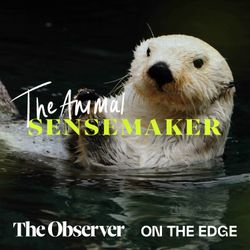
32. Sea otters: favourite rocks and tummy tables
10:11||Season 1, Ep. 32Diving to depths of around 20 metres, sea otters can access all kinds of food but they often need the help of their favourite rock to crack open their catch.No bigger than a golf tee, the Nguru pygmy chameleon tends to hide among leaf litter on forest floors. But why are they important to local farmers?The Animal Sensemaker - one animal, every week to make sense of the world. Brought to you by Tortoise and On the EdgeYou can find out more about the sea otter here. To find out more about The Observer:Subscribe to TheObserver+ on Apple Podcasts for early access and ad-free contentHead to our website observer.co.uk Download the Tortoise app – for a listening experience curated by our journalistsIf you want to get in touch with us directly about a story, or tell us more about the stories you want to hear about contact hello@tortoisemedia.com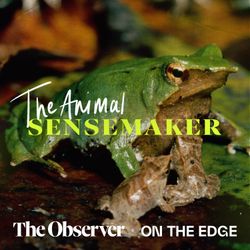
31. Darwin's frog: ‘pregnant’ males and a 7,000 mile journey
12:28||Season 1, Ep. 31After a deadly fungus spread through the rainforests in southern Chile, conservationists embarked on a rescue mission to save Darwin's frog.The Animal Sensemaker - one animal, every week to make sense of the world. Brought to you by Tortoise and On the EdgeYou can find out more about the Darwin frog here.To find out more about The Observer:Subscribe to TheObserver+ on Apple Podcasts for early access and ad-free contentHead to our website observer.co.uk Download the Tortoise app – for a listening experience curated by our journalistsIf you want to get in touch with us directly about a story, or tell us more about the stories you want to hear about contact hello@tortoisemedia.com
30. Long-Beaked Echidna: Attenborough’s elusive creature rediscovered
11:11||Season 1, Ep. 30Sixty-two years after Attenborough's long-beaked echidna was last scientifically recorded, Expedition Cyclops went on a mission to find out whether the species still exists in the Cyclops Mountains. You can find out more about the long-beaked echidna here.The Animal Sensemaker is brought to you from Tortoise and On the Edge. If you’d like to learn more about the hunt for Attenborough’s echidna, click on the links below:https://www.expeditioncyclops.org/ https://expeditioncyclops.substack.com/ https://www.yappenda.eco/ https://www.biology.ox.ac.uk/people/james-kempton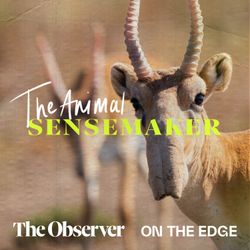
29. Saiga Antelope: humungous noses and countless comebacks
09:51||Season 1, Ep. 29Having roamed since the Ice Age, Saiga Antelope are no stranger to harsh conditions. But as mass mortality events leave their population extremely vulnerable, how have they managed to make countless comebacks?The Animal Sensemaker - one animal, every week to make sense of the world. Brought to you by Tortoise and On the Edge.Find out more about the Saiga Antelope here. To find out more about The Observer:Subscribe to TheObserver+ on Apple Podcasts for early access and ad-free contentHead to our website observer.co.uk Download the Tortoise app – for a listening experience curated by our journalistsIf you want to get in touch with us directly about a story, or tell us more about the stories you want to hear about contact hello@tortoisemedia.com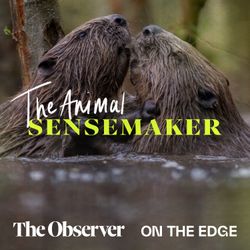
28. Beavers: waffle tails and river lodges
11:07||Season 1, Ep. 28After being extinct in England for centuries, beavers are making a comeback thanks to a new license permitting their wild release. How could their dam building prevent flooding and droughts?You can find out more about the beaver here. The Animal Sensemaker - one animal, every week to make sense of the world. Brought to you by Tortoise and On the Edge.To find out more about The Observer:Subscribe to TheObserver+ on Apple Podcasts for early access and ad-free contentHead to our website observer.co.uk Download the Tortoise app – for a listening experience curated by our journalistsIf you want to get in touch with us directly about a story, or tell us more about the stories you want to hear about contact hello@tortoisemedia.com